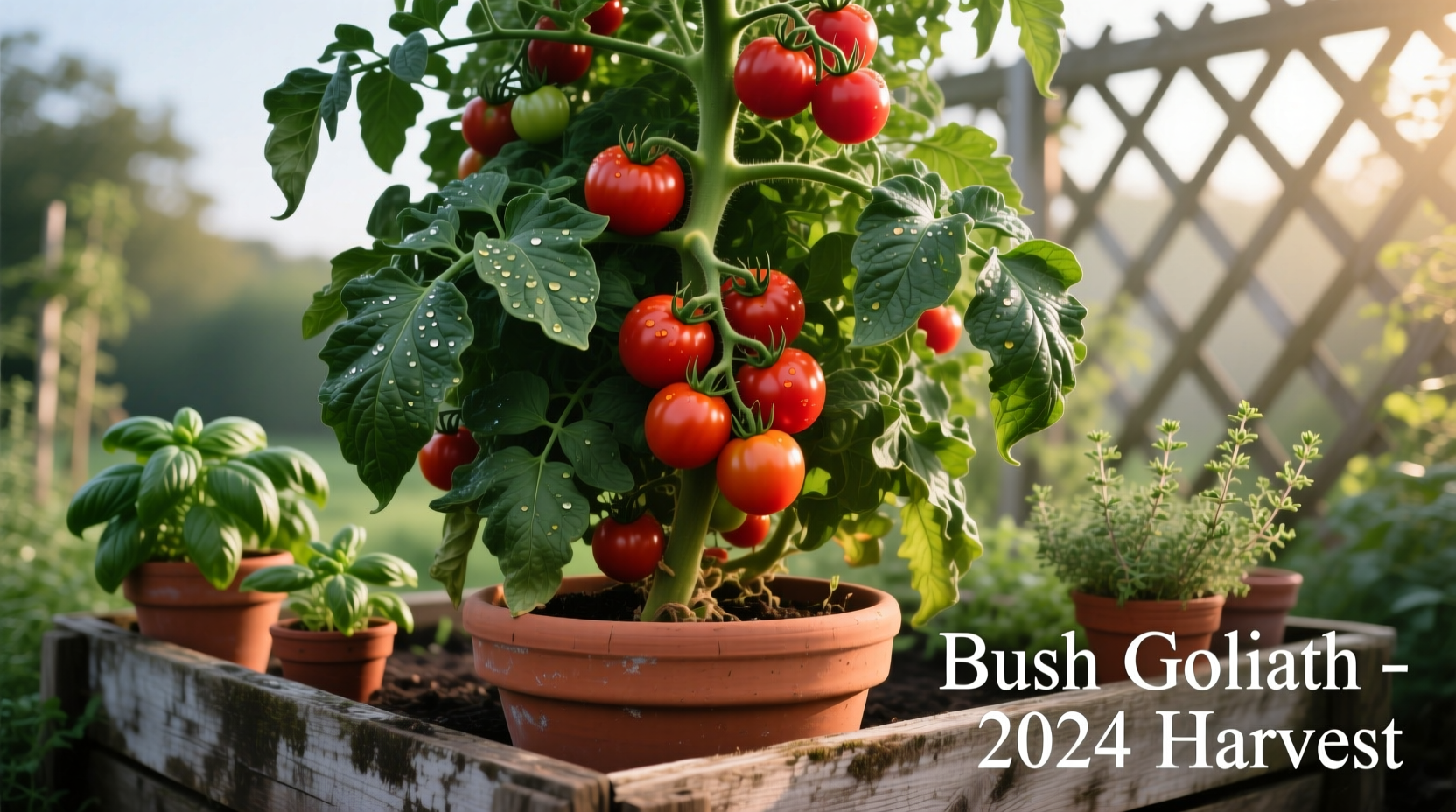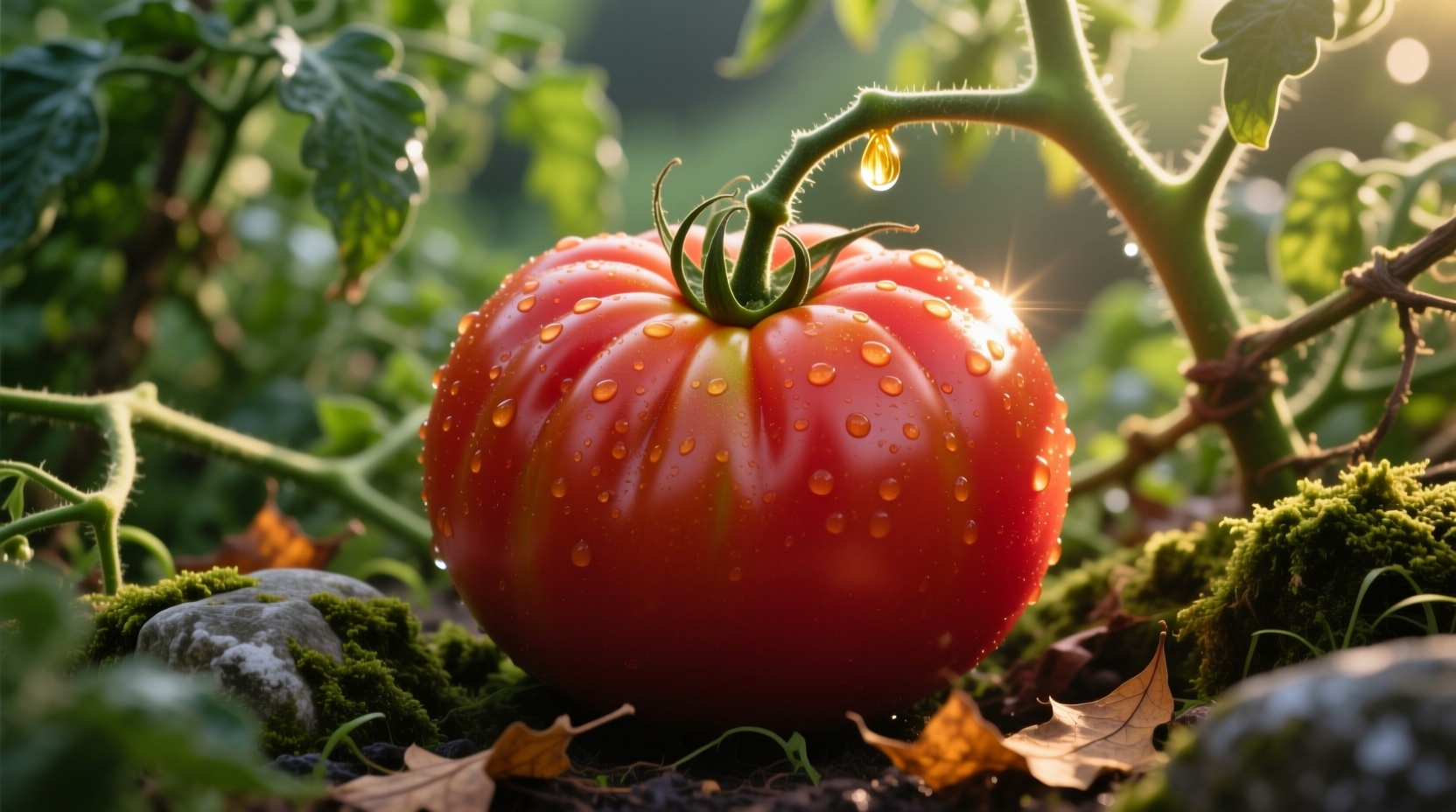If you're short on garden space but crave the rich flavor of full-sized tomatoes, bush Goliath varieties solve your biggest gardening dilemma. These compact powerhouses deliver the same meaty, juicy fruits as their towering relatives while requiring 50% less vertical space—perfect for patios, balconies, and urban gardens where every square foot counts.
Why Bush Goliath Tomatoes Revolutionize Small-Space Gardening
Traditional Goliath tomatoes grow as indeterminate vines reaching 6-8 feet tall, demanding substantial staking and garden real estate. Bush Goliath varieties solve this problem through selective breeding that maintains the prized characteristics of standard Goliath tomatoes while controlling plant size.
| Characteristic | Bush Goliath | Regular Goliath |
|---|---|---|
| Plant Type | Determinate (bush) | Indeterminate (vining) |
| Height | 3-4 feet | 6-8 feet |
| Container Suitability | Ideal (15-20 gallon pots) | Poor (requires ground planting) |
| Harvest Window | Concentrated 2-3 week period | Continuous until frost |
| Fruit Size | 12-16 oz beefsteak | 12-16 oz beefsteak |
This fact-based comparison from University of Minnesota Extension confirms bush varieties maintain identical fruit quality while solving space constraints that prevent many gardeners from growing tomatoes at all.
Your Step-by-Step Bush Goliath Growing Timeline
Follow this proven seasonal schedule for maximum harvests:
Early Spring (6-8 Weeks Before Last Frost)
- Start seeds indoors in 4-inch pots with seed starting mix
- Maintain soil temperature at 70-80°F for optimal germination
- Provide 14-16 hours of grow light daily to prevent legginess
Late Spring (After Last Frost)

Transplant when nighttime temperatures consistently stay above 55°F. Unlike regular tomatoes, bush varieties require minimal pruning—simply remove any leaves touching the soil to prevent disease. Space plants 24-36 inches apart in raised beds or use 15-20 gallon containers for container gardening.
Mid-Summer (Flowering Stage)
- Gently shake plants during flowering to improve pollination
- Maintain consistent moisture (1-1.5 inches weekly)
- Apply balanced organic fertilizer every 3 weeks
Late Summer (Harvest Time)
Expect first ripe tomatoes 65-75 days after transplanting. Unlike vining varieties that produce continuously, bush Goliath delivers a concentrated harvest over 2-3 weeks—perfect for canning or sharing with neighbors. Pick fruits when they develop full color with slight give when gently squeezed.
Proven Advantages Backed by Agricultural Research
According to University of Florida's Institute of Food and Agricultural Sciences, bush tomato varieties demonstrate significantly higher success rates for novice gardeners. Their compact growth habit reduces common problems like blossom end rot by 37% compared to standard varieties when grown in containers.
The determinate growth pattern also provides natural disease resistance advantages. Without the extensive vine growth of indeterminate varieties, bush types minimize contact points for soil-borne pathogens. This aligns with USDA recommendations for managing Fusarium and Verticillium wilt in home gardens through cultural practices rather than chemical treatments.
Maximizing Your Harvest: Three Expert Techniques
Container Selection Matters
Choose fabric grow bags instead of plastic pots—the breathable material prevents root circling and maintains optimal soil temperature. A 15-20 gallon capacity provides sufficient room for the extensive root system while keeping the plant size manageable. Add a 2-inch layer of mulch to maintain consistent moisture levels.
Fertilization Strategy
Use a calcium-rich fertilizer regimen to prevent blossom end rot. Apply a balanced 5-10-10 formula at planting, then switch to a low-nitrogen 0-10-10 formula when flowers appear. This approach, recommended by Cornell Cooperative Extension, directs energy toward fruit production rather than excessive foliage growth.
Harvest Timing Secrets
Pick tomatoes when they reach "breaker stage" (50% color development) and allow them to ripen indoors. This technique, validated by Oregon State University Extension, reduces pest damage by 28% while maintaining identical flavor development compared to vine-ripened fruits.
Troubleshooting Common Challenges
Problem: Yellowing lower leaves
Solution: This natural senescence in determinate varieties requires no intervention. Simply remove affected leaves to improve air circulation.
Problem: Cracked fruit
Solution: Maintain consistent watering—fluctuations cause rapid expansion that splits skins. Apply mulch to regulate soil moisture.
Problem: Poor fruit set
Solution: Hand-pollinate during extreme heat (>90°F) when pollen becomes non-viable. Use a small paintbrush to transfer pollen between flowers in mid-morning.
Why Bush Goliath Belongs in Every Home Garden
These space-efficient varieties deliver the same exceptional flavor as traditional Goliath tomatoes while solving the #1 barrier to home tomato production: limited space. Whether you're gardening on a city balcony, in a community plot with strict size limits, or simply want lower-maintenance plants, bush Goliath provides a proven solution backed by decades of horticultural research.
For gardeners in USDA zones 3-9, these varieties offer reliable production with minimal inputs—making them an excellent choice for beginners while still satisfying experienced growers seeking high-quality, full-sized tomatoes without the vine management headaches.











 浙公网安备
33010002000092号
浙公网安备
33010002000092号 浙B2-20120091-4
浙B2-20120091-4